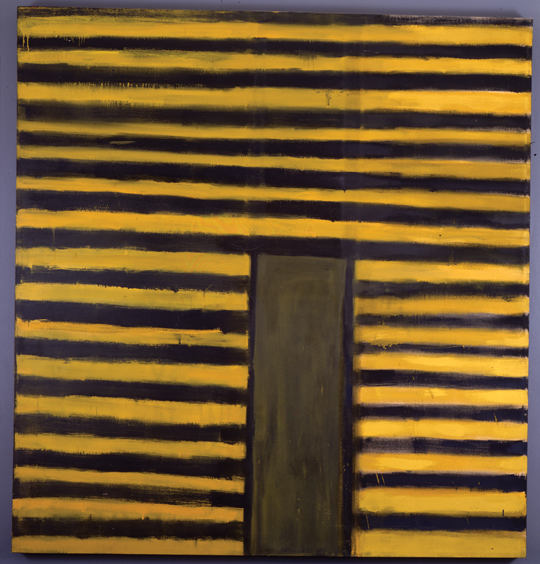Abstract Surroundings
“Learning how to make abstract paintings is just about learning how to paint, literally learning what paint and canvas can do.”
— Frank Stella
While learning how to make abstract paintings, Stella adopted a systematic, problem-solving approach. East Broadway (1958) takes its title from the main thoroughfare of New York’s Chinatown, which was just a few blocks from Stella’s first loft on Eldridge Street. Upon moving to New York City in 1958, Stella painted houses part-time—and he used the same commercial paints in his art. He bought unfashionable colors from the bargain bin, used a house-painter’s brush, and stretched his canvas on frames he built from 1x3" boards. Stella titled some of this series of paintings after places in New York City, noting that their geometric structure reminded him of the semi-industrial, downtown cityscape that surrounded him at that time.
a. Ask your students to view and discuss East Broadway, 1958. Do the shapes or patterns in this painting remind them of anything? Have them imagine that the image extends beyond the limits of the painting’s edges. What else might they see in the surrounding space? Ask your students to discuss or draw what they might see.
b. Ask students to use two or three colors and two or three shapes to create an abstract work based on their surroundings—for example, a part of their school, city, or town.

